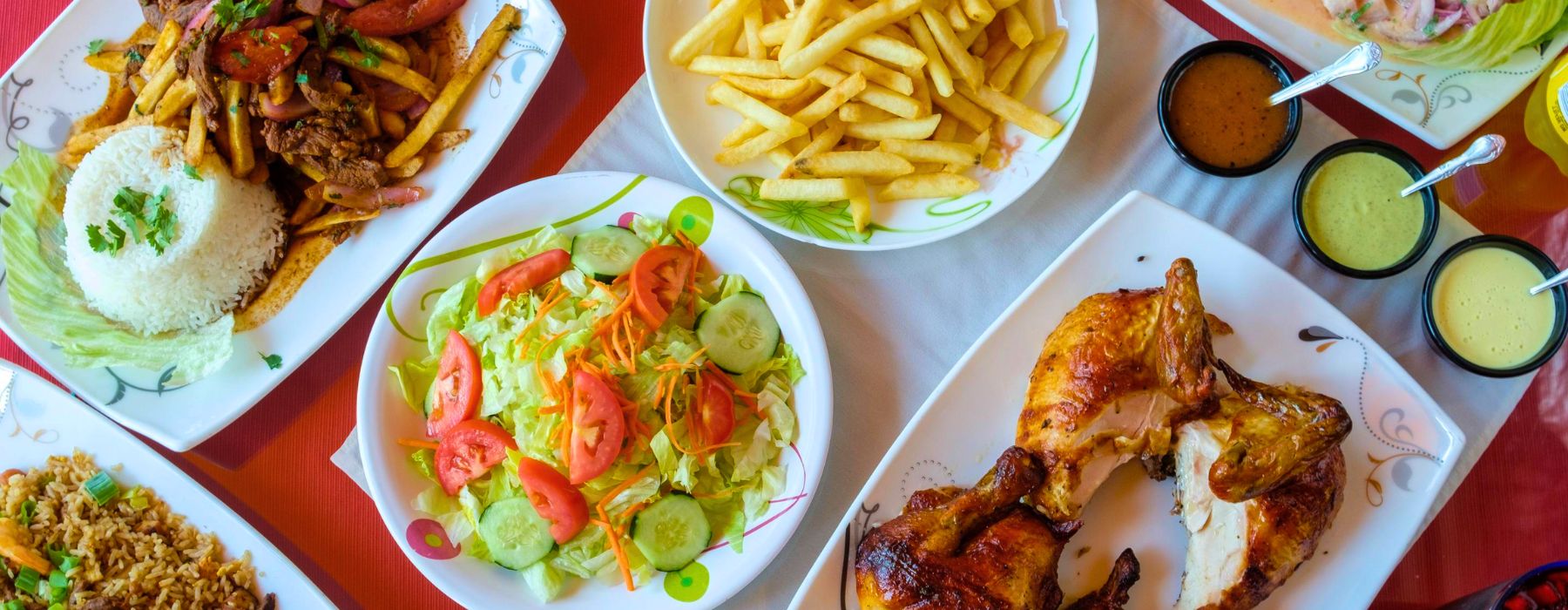
Peru stands out for its delicious flavors, there is no person who comes to the country and does not fall in love with some of our dishes. Therefore, if you are close to traveling to Peru, we recommend you take into account the following dishes from our varied Peruvian gastronomy. The amount of best Peruvian foods that exists makes the gastronomy of this country one of the richest and most varied in the world. Peruvian gastronomy is a symbol of pride for each of its inhabitants.
It is one of the largest and most exquisite in the world without a doubt. Every day, representatives of our kitchen create new techniques and variations of dishes that will definitely delight the palates of its lucky guests. A country blessed with a privileged kitchen, which is very difficult to decide which is better than another.
If you have already traveled to Peru, you know how well it eats. If there are Peruvian restaurants in your city, consider visiting them and trying absolutely all the dishes on their menu, you will not regret it. Peru is a country where you can go exclusively to eat and you will surely not have enough time to try everything. The typical dishes of Peru are a faithful reflection of the cultural richness and diversity of this fascinating South American country. Peruvian gastronomy, considered one of the most outstanding in the world, masterfully combines native ingredients and culinary techniques inherited from different cultures, such as Spanish, African, Chinese and Japanese.
Exploring typical best Peruvian foods, such as ceviche, lomo saltado or the Lima cause, is to immerse yourself in a world of flavors, colors and textures that delight the palate and captivate diners from all over the world. These culinary delights not only offer a unique gastronomic experience, but also allow you to discover the history and traditions that make up the essence of this wonderful country and its people. Peru has been chosen five times as the best culinary destination in the world.
What is the secret? The best kept secret of best Peruvian foods is without a doubt its natural ingredients and it is that Peru was blessed with having one of the largest varieties of tubers and vegetables on the planet, this is reflected in its hundreds of typical dishes of international fame that have enchanted millions of people around the world.
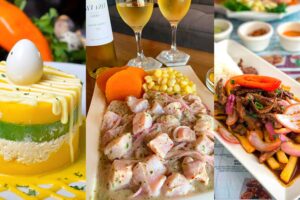
Ceviche is one of the most emblematic dishes of Peru, its flavor has conquered the world and for this reason, on several occasions it is part of the menus of national and international restaurants.
It is a nutritious food whose main input is raw fish. This is cooked with lemon juice, chili, onion and salt. Likewise, it is accompanied by sweet potato, corn, seaweed (yuyo), cassava or even parboiled potatoes. The mountain court is another key accompaniment.
However, there are combinations known as trio or duo, which include ceviche with mixed chicharrón, leche de tigre or rice with seafood.
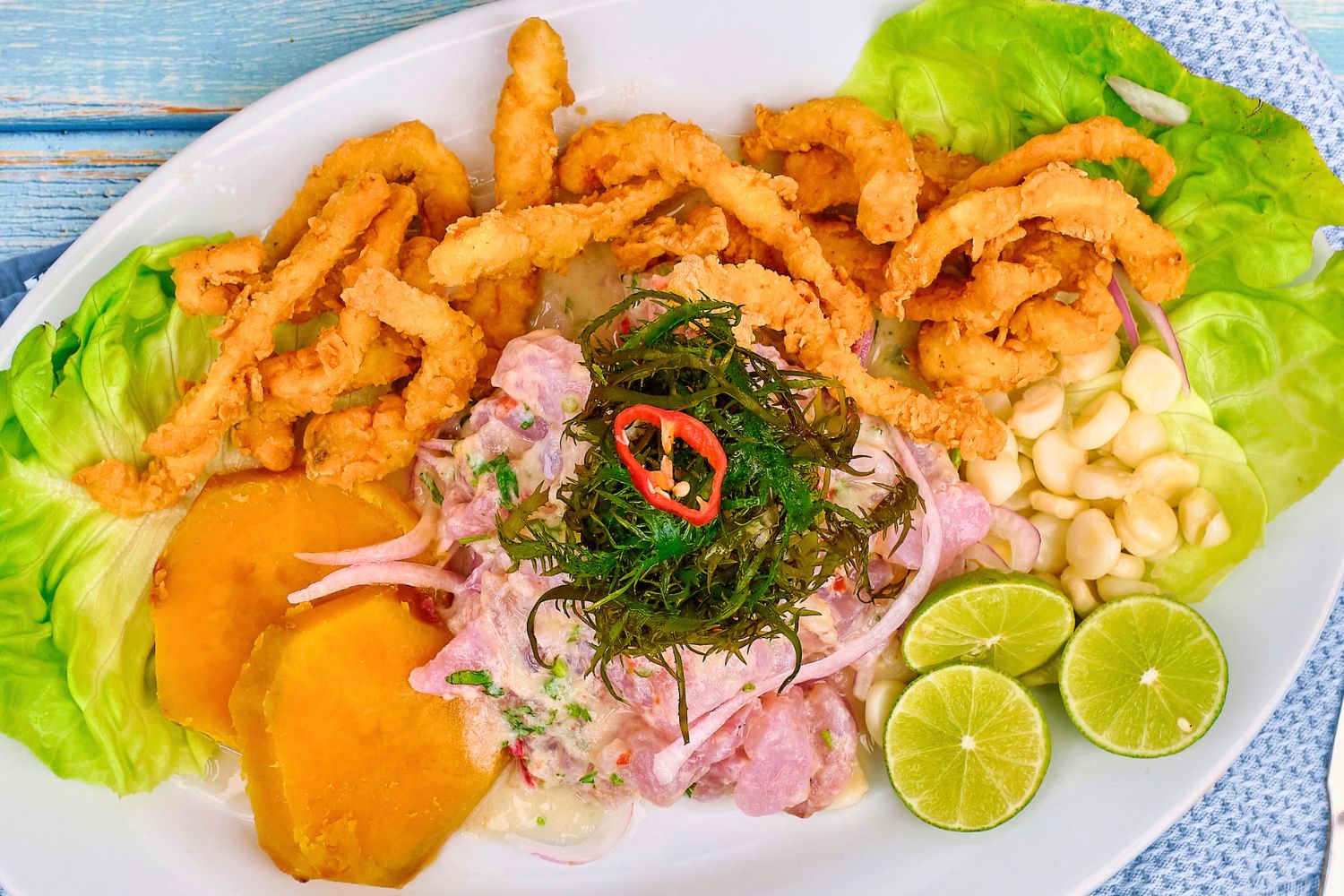
Now we turn to a dish loved by all Peruvians and that we undoubtedly recommend to anyone visiting our country for the first time. As its name indicates, the loin is pan-fried until it is properly cooked, together with a little vinegar and some spices, and then it is accompanied by French fries and rice.
The Lomo Saltado is a dish whose origin dates back to the arrival of the Chinese-Cantonese in Peru from the 19th century, who finished perfecting this exquisite dish that palates from all over the world seek to try as soon as they set foot on Peruvian soil.
The secret to the amazing flavor of the lomo saltado in this recipe is in the vinegar. The secret to the texture and juiciness of both the meat and the vegetables lies in cooking each of the ingredients over very high heat for a very short time. It is very important that you do not get distracted while preparing this dish. Everything happens very quickly and any lack of attention can completely alter the result.

According to research, ají de gallina derives from the Catalan “menjar blanc”, a mainly sweet cream from medieval Europe made from chicken or chicken, rice starch, almonds and sugar. As happened in practically all cases, upon reaching American territory, the recipe was “reinterpreted” and modified, giving rise to new preparations.
On the one hand, it led to the white manjar de leche (now without meat) and on the other, in a salty variant that ended up giving our delicious, famous and beloved ají de gallina. Ingredients such as bread, spices, milk and, of course, yellow peppers were added, thus losing their sweet touches.
Later, it began to be served as an appetizer with potatoes, hard-boiled eggs, black olives and, in some cases, Parmesan cheese and other ingredients. This dish is known as ají de gallina but it is usually prepared with frayed chicken breast pulp accompanied by white rice.
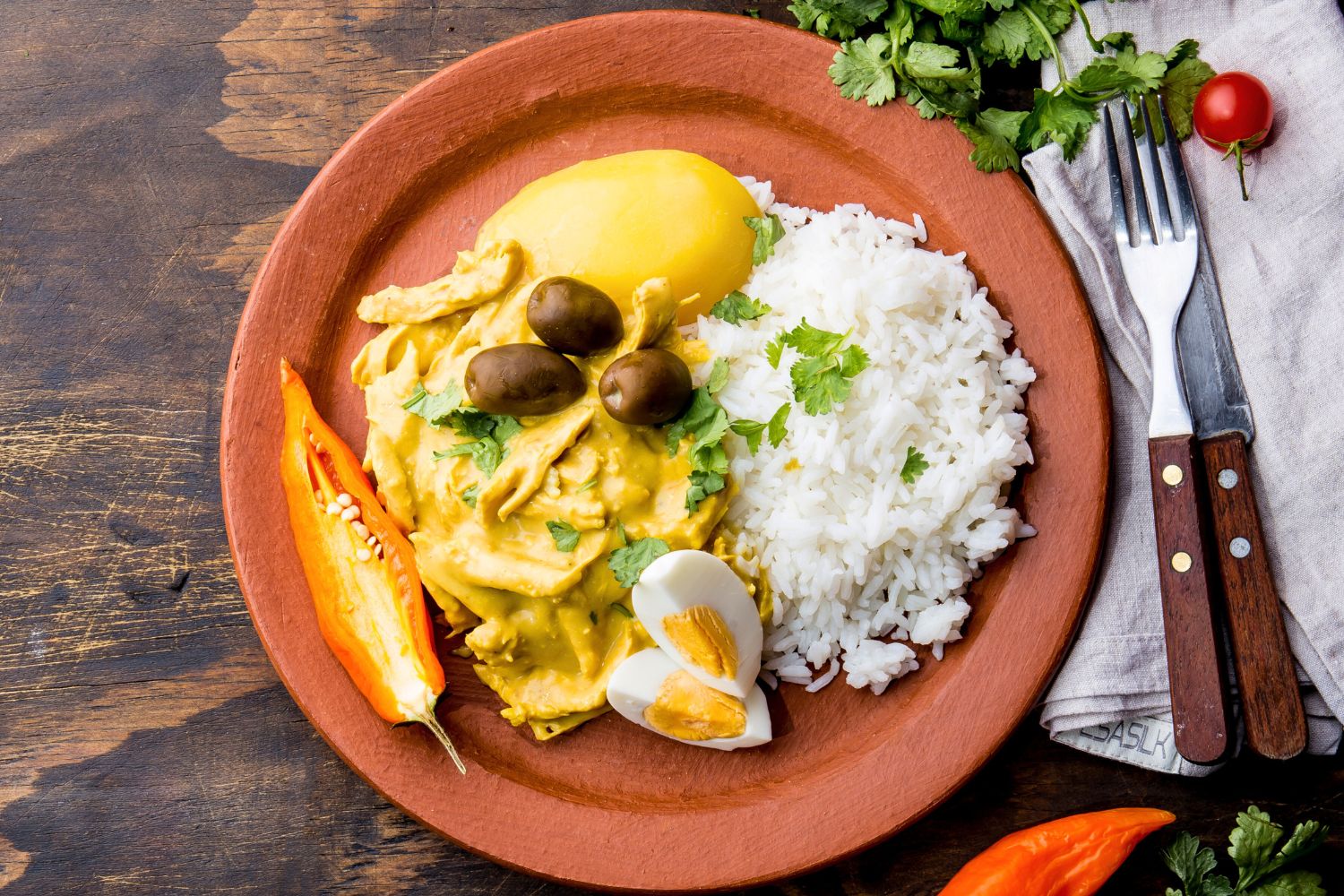
Various studies indicate that this dish dates from the year 1820, a period that coincides with the well-known expedition to liberate Peru, led by General José de San Martin for the independence of the country with the mission of leaving behind the Spanish regime. With the initiative to better organize and support the Peruvian soldiers, the women began looking for ways to gather supplies and prepare dishes to sell. The profit they obtained later would be used to buy medicine, clothing and food for the soldiers.
That was how the potato once again lived, the leading role. It was enough to be boiled, pressed and seasoned with some yellow pepper and salt to start selling them in the squares. The women of that time advertised their product under the slogan “For the Lima cause” or “For the cause”, referring to the struggle that was being waged at that time.
This dish is traditionally made on the basis of yellow potatoes, lemon, yellow chili, boiled egg and black olives, ingredients to which avocado was later added for the filling and lettuce for decoration. This preparation admits several variants, such as a cause stuffed with tuna, trout, chicken, shellfish or other varieties of white meat. Served with a light mayonnaise bath.
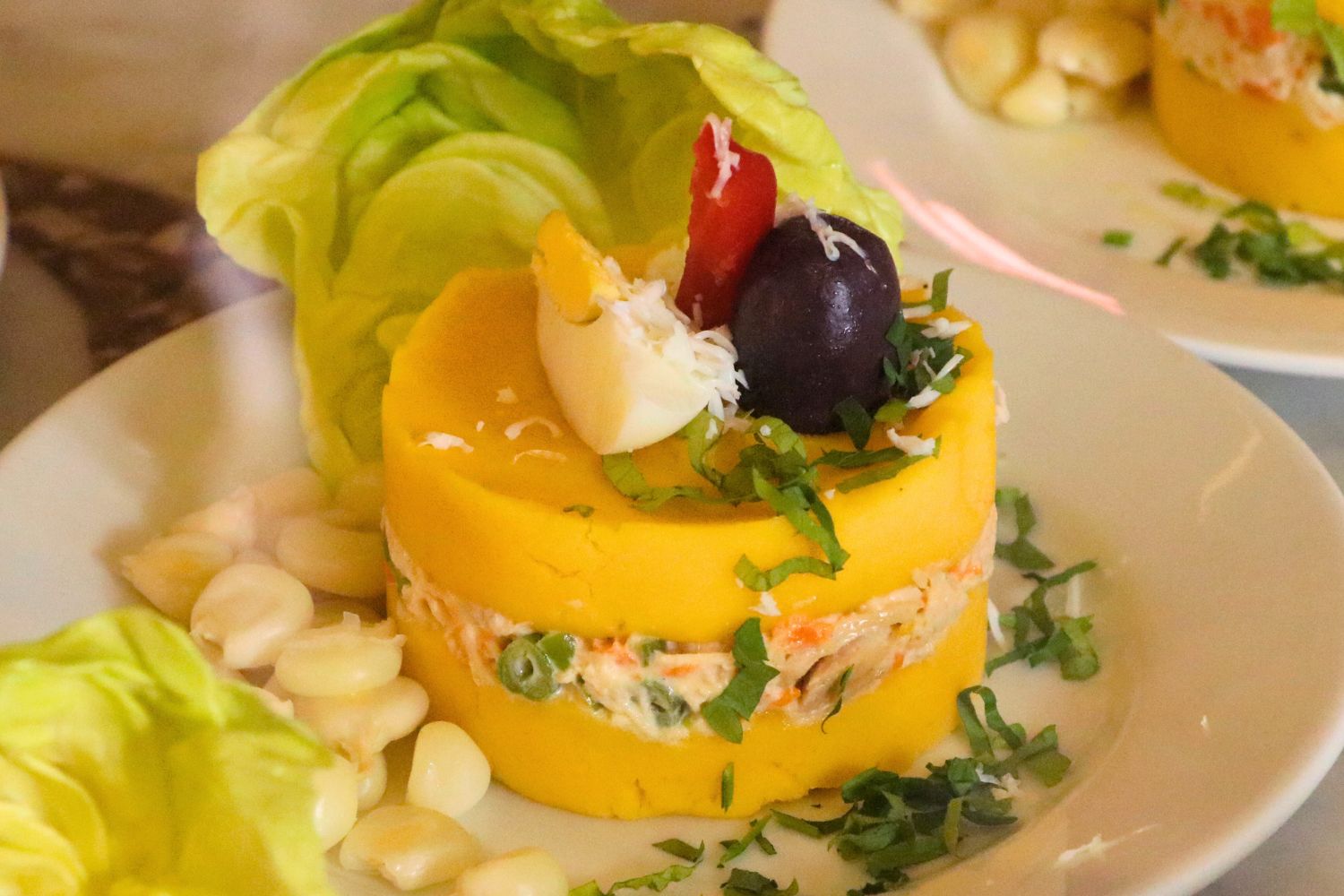
Since ancient times, Peruvian gastronomy was very special and used different culinary techniques for the preservation and preparation of food. The pachamanca is part of the heritage of our ancestors, the most representative of the Incas, an impressive food that represents us worldwide to this day.
Pacha means “earth” and manka means “pot”. The pachamanca is better known as “Olla de tierra”. The pachamanca was a way of paying homage to the divinities of the Andean world, a subtle way of making a payment to the land after what was called a good harvest.
It is made up of parboiled ingredients, where meats prevail, including beef, lamb, chicken, guinea pig and pork, along with corn or corn, potatoes, ocas, broad beans, sweet potato and humitas. Being a dry dish, it can be accompanied by a sauce such as rocoto, huacatay, cheese or Creole sauce, this depends on the area.
In addition, it has a unique feature. It is cooked in the middle of the earth. To do so, a trench is made, into which preheated stones, rocks or bricks and all the previously mentioned ingredients are introduced. These will end up cooking with the heat from the preheated items.
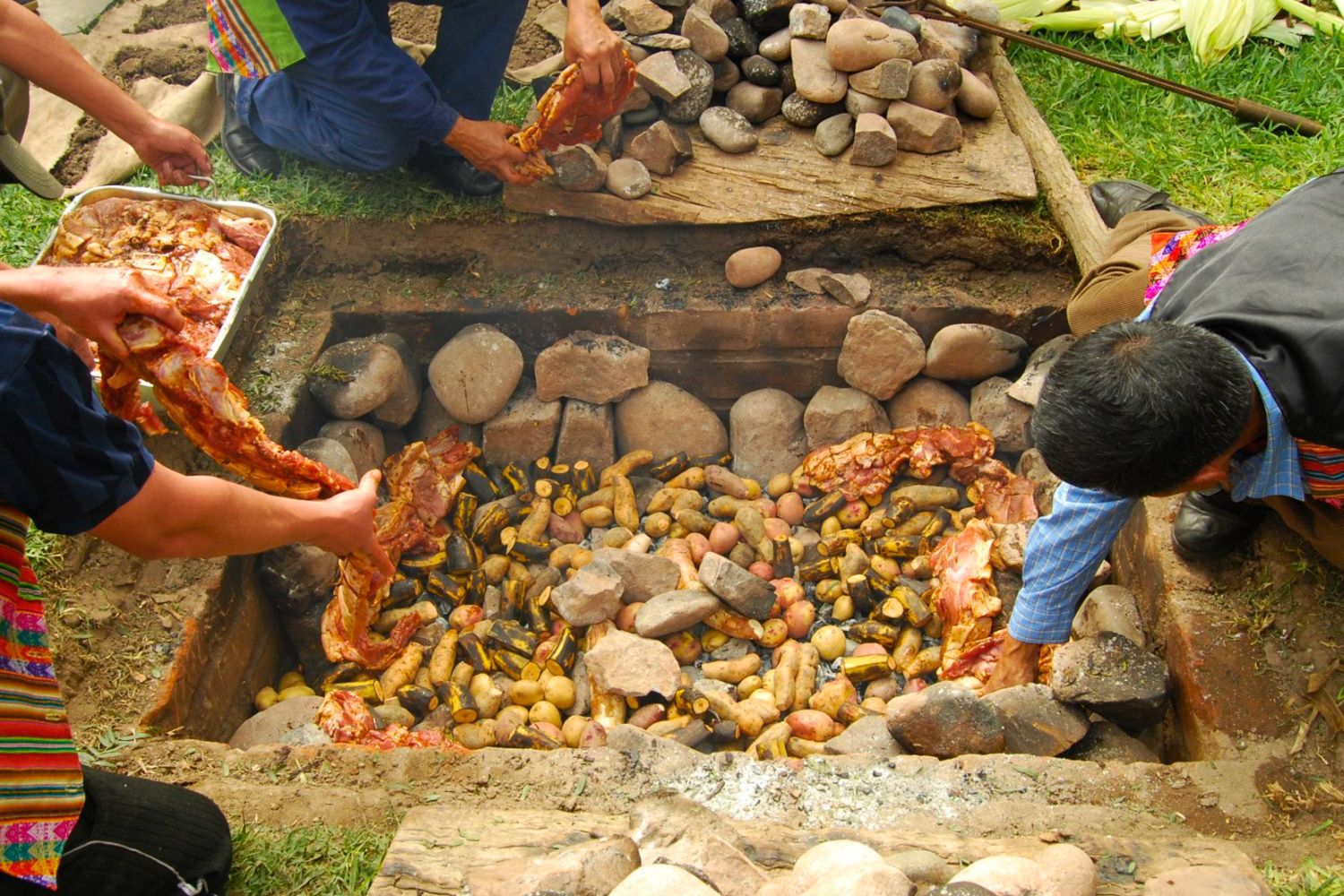
Investigations ensure that it was initially prepared with pieces of llama meat seasoned with herbs and chili. Years later, with the arrival of the Spanish, a new recipe and preparation technique arose. The colonists marinated beef in wine (accompanied by other seasonings), then it was fried and, cut into pieces, placed in a row on sticks (the appearance very similar to that of skewers).
Anticuchos are seasoned pieces of meat or offal, strung on sticks of cane and roasted on a grill over charcoal. Traditionally, they are sprayed with seasoned oil using a brush made from pancas de corn. Currently, the most common anticuchos are those with beef hearts, macerated with cumin, chili, garlic, salt, vinegar or other seasonings, and are served with parboiled potatoes and chili and rocoto creams. They are also usually accompanied with rachi, choncholí and tummy.
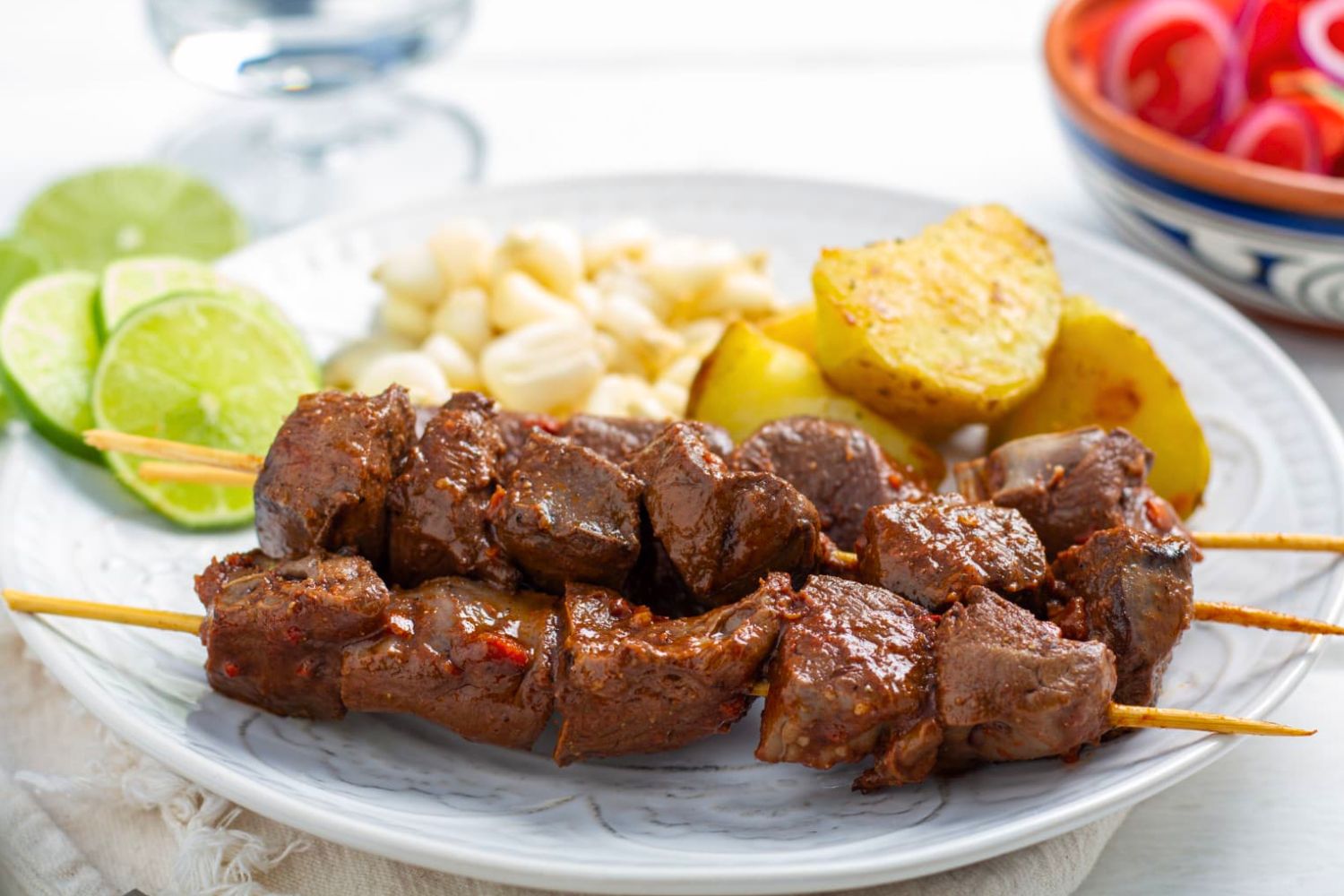
Its history began to be written in 1949 by the hand of Roger Schuler, a foreigner of Swiss nationality who lived in Peru, in the district of Atevitarte. In this place he maintained a farm where he raised chickens. Franz Ulrich, a friend and associate of Schuler who devised the way to cook more than one chicken at a time, faster and with uniform cooking, thus was born the oven that they named “Retombo”.
On February 5, 1950, the doors of La Granja Azul were opened for the first time, which was the color that predominated in the enclosure. Of course, history amply demonstrated that the idea was a success; The grilled “chick” was sold like hot bread with an initial recipe that included only salt, but which changed over time and improved by including different spices such as huacatay or ají panca.
Grilled chicken is usually accompanied by a portion of French fries and vegetable salad, also with a Creole sauce, although it can also be accompanied with chaufa rice. It is also accompanied with a variety of sauces and creams that each diner is served according to their taste, among these sauces mayonnaise, mustard and ketchup can be mentioned, but the chili sauce, usually prepared with local ingredients, including chili, stands out. yellow.
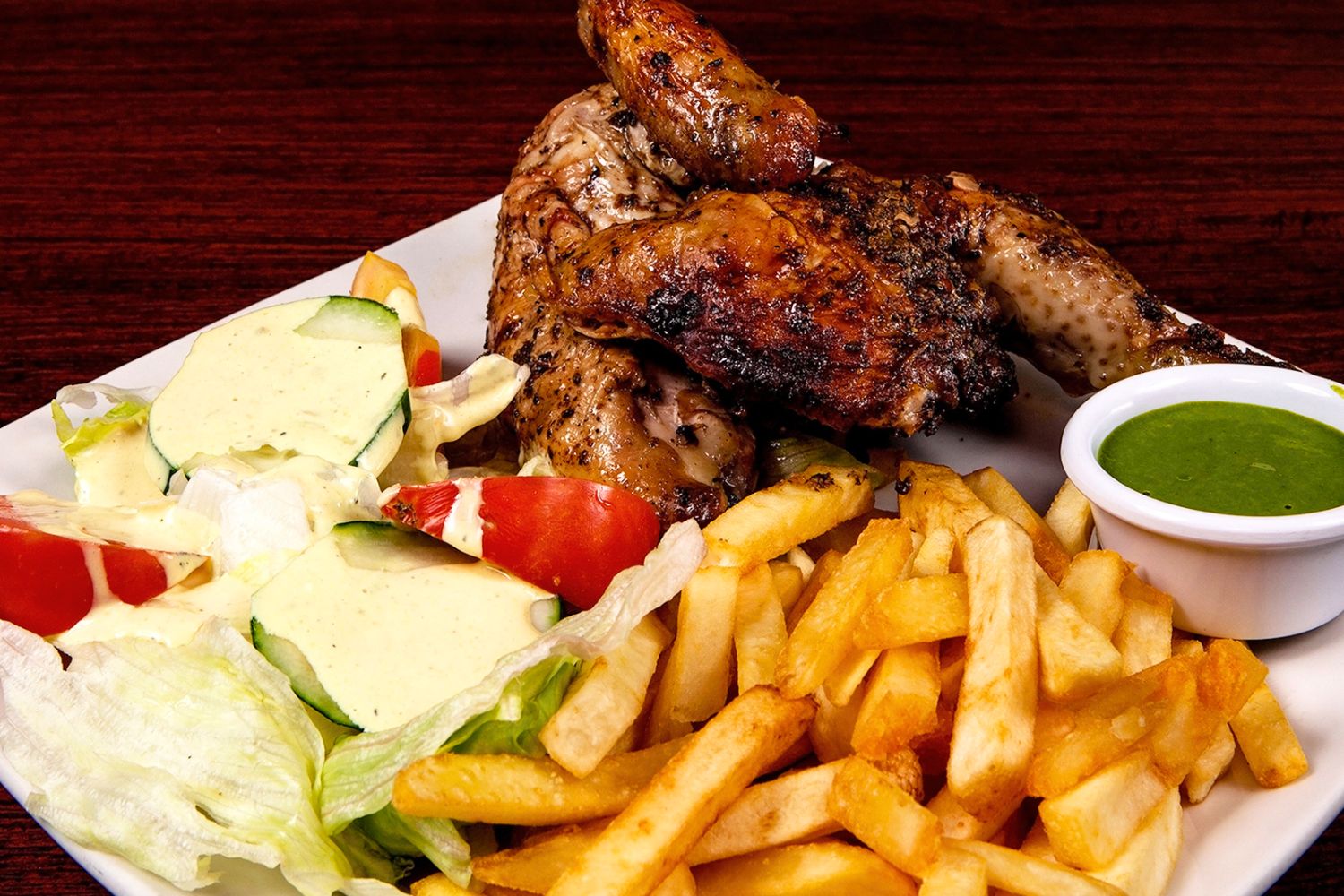
The stuffed rocoto is the gastronomic emblem of Arequipa par excellence and also a symbol of the cultural miscegenation of Peru, as it combines ingredients from the Andes, as well as those brought by Europeans 500 years ago. Treasured in picanterías, it is also a testament to the passion of Peruvians for spicy flavors. This dish, consumed mainly as a starter, is a source of pride not only for Arequipeños, but also for all Peruvians.
The stuffed rocoto is made from rocoto, a pointed and round fruit that is produced mainly in the Arequipa region. It is based on extracting its seeds to fill it with a kind of minced meat, olives, peas and before baking it with a little fresh cheese. You can enjoy it as a starter or main course.
Although there are other variations, such as the cusqueña, it is usually eaten accompanied by a portion of recently cooked solterito or potato cake.
They say that the creation of the Rocoto Relleno occurred when a man named Manuel Masías, a renowned cook from Arequipa, had to cook for the devil to recover the soul of his daughter Delphine, who had died at an early age and was held captive by Lucifer. To fulfill his goal, the chef had to prepare a banquet that Lucifer liked, so he decided to create the Rocoto Relleno, mixing dream flavors.
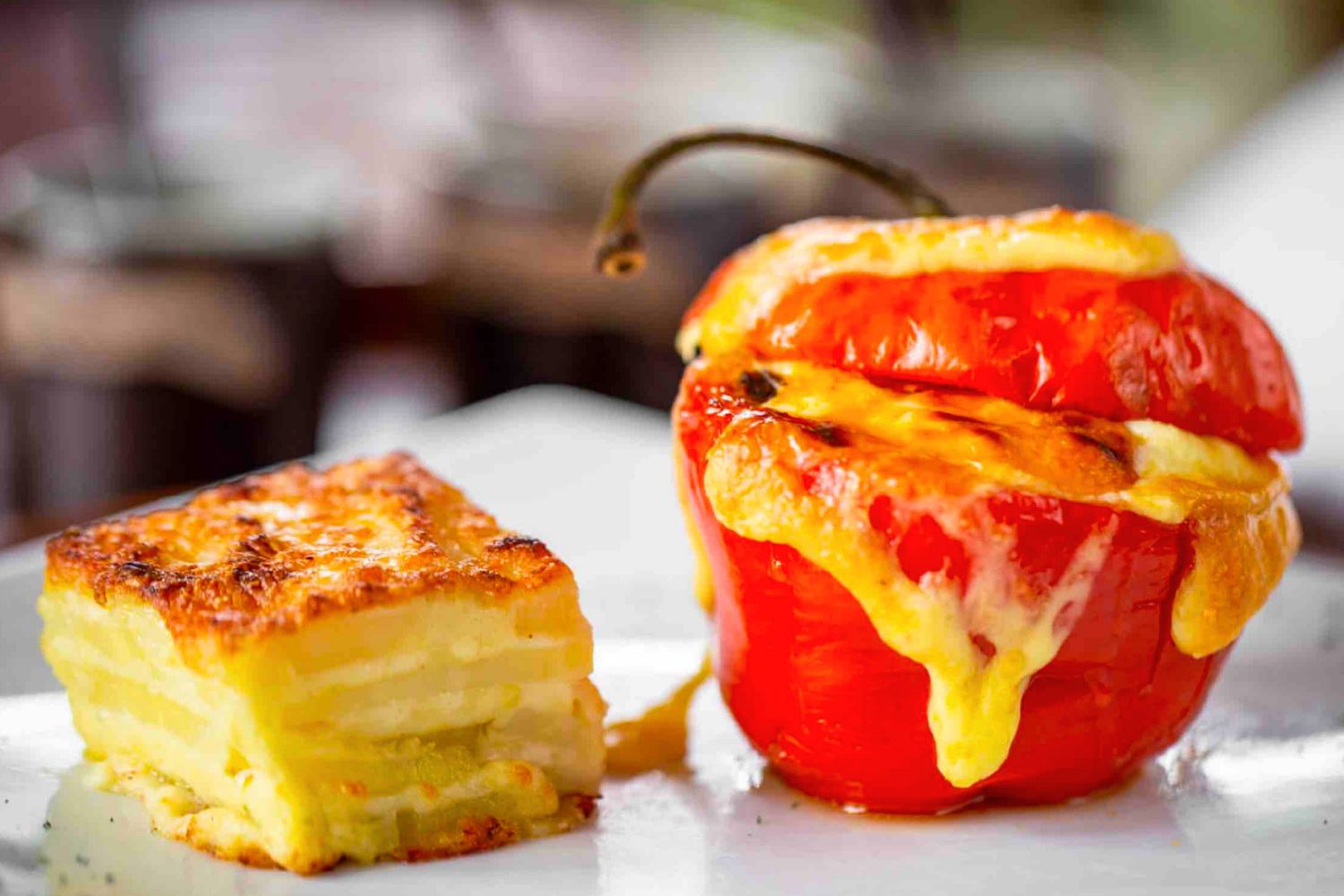
It is said that arroz con pollo was born as a reinterpretation, a sample of the adaptability that characterizes Peruvians. During the 19th century, El Arroz con pato, a characteristic dish of the Lambayeque region, in the north of the country, became popular among the people of Lima. However, in the capital it was very expensive and difficult to obtain at that time its two main ingredients: chicha de jora and duck.
The creativity of the Lima cooks found the solution by replacing the duck with chicken and the chicha de jora with the black beer that was produced in Lima. Since then its popularity has grown and today it is part of all Peruvian food recipes.
Chicken rice is among the most consumed dishes on Peruvian menus. Accompanied by a criolla sauce and/or a huancaína sauce, it has everything we are looking for in a bite: intense flavors, texture, the cream, the sauce and little surprises along the way, peas, corn, pepper.
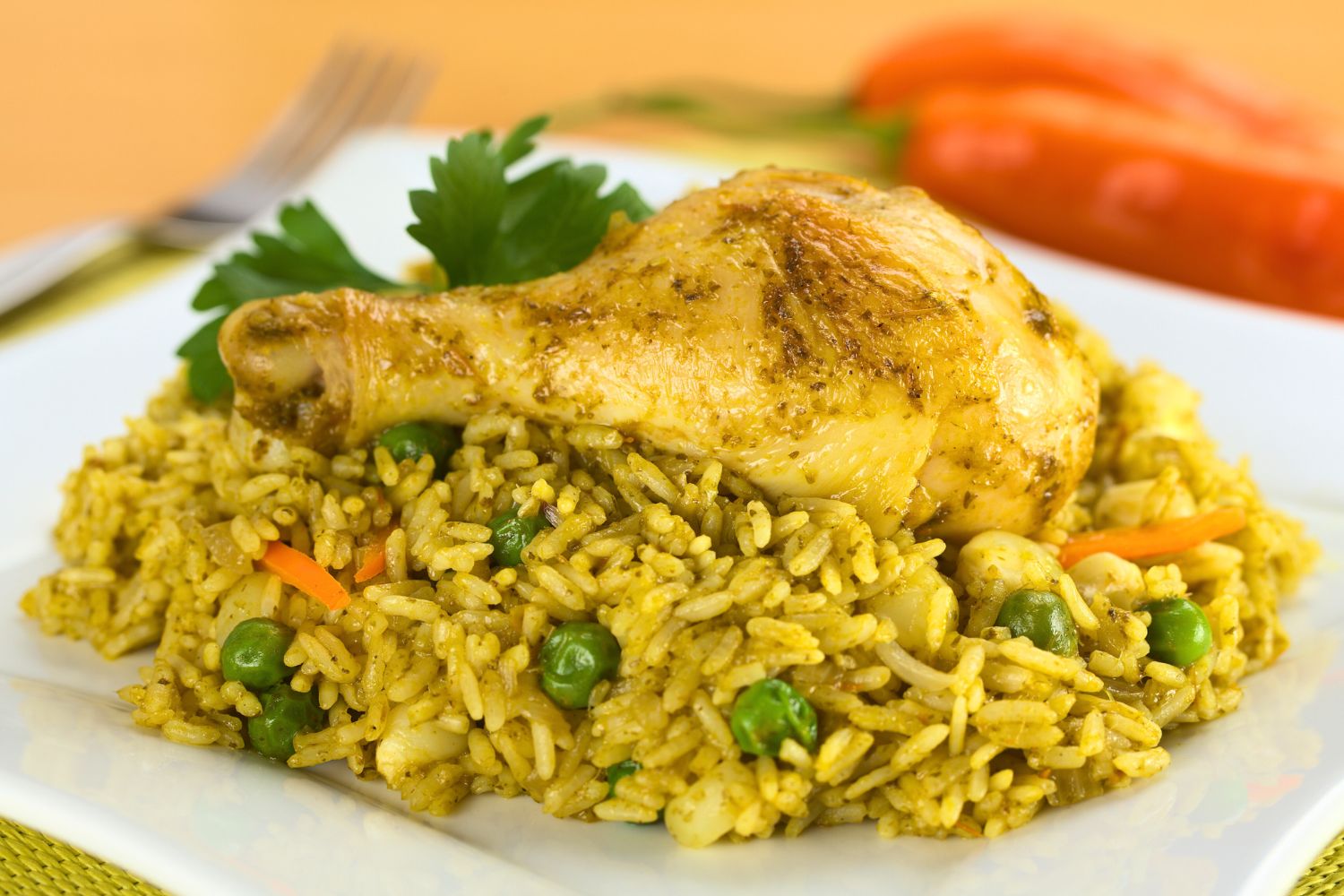
Papa a la huancaína is a traditional entry of Peruvian gastronomy and one of the most important accompaniments in various typical Peruvian dishes. This dish is probably one of the best known and most representative of Peru.
There are several versions about the origin of the Huancaina potato, but the most accepted are associated with the construction of the Central Railway of Peru. It is said that during the construction of the railway, the workers used to eat potatoes with a sauce of chili peppers and milk that the Huancaína women prepared for them (hence the name of papa a la huancaína). Also, this delicious dish used to be served at the old railway station between Lima and Huancayo. For that reason, it was called “Potatoes that are eaten on the road to Huancayo”.
The elaboration consists of the preparation of a sauce whose base is fresh cheese and yellow chili. Evaporated milk and oil are added to form the semi-liquid consistency it requires. It is served on slices of boiled potatoes, which in turn rest on a lettuce leaf. For its presentation, sliced hard-boiled eggs and olives are added.
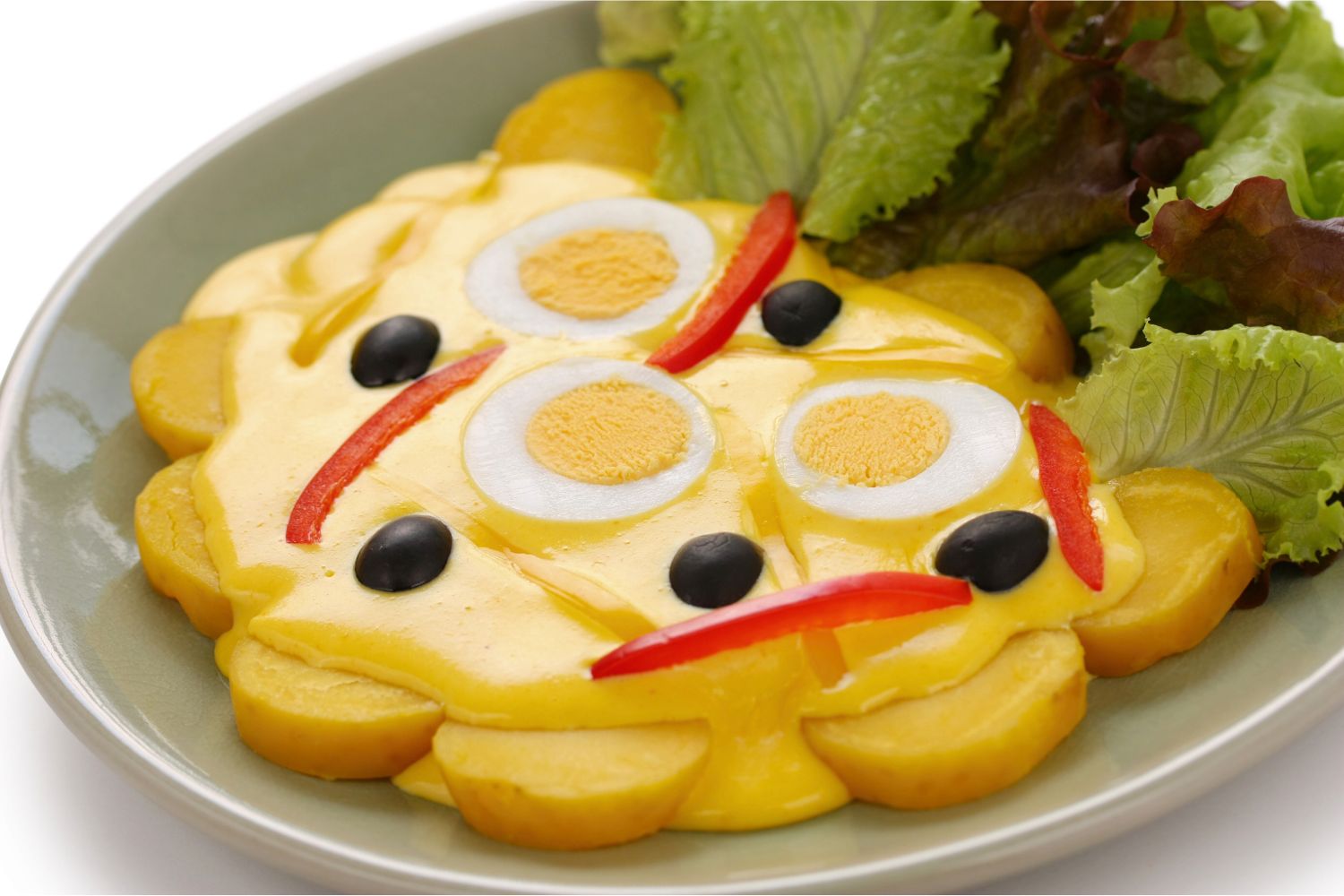
Carapulcra, a traditional Peruvian dish made with dried potatoes, has its roots in the 17th century, but it was in the first half of the 19th century that it became an essential presence at family gatherings.
This stew has been part of family traditions since Inca times and is considered one of the most anticipated dishes in popular festivities. Its name derives from the word “qala phurk’a” in Aymara, which means “to cook on the stone”. Originally, the recipe was based on a combination of llama or alpaca meat and ají panca, but over time it has evolved and varied.
In Ica, the carapulcra is prepared with pork and is served alone or accompanied with dry soup, in this case it is called “mancha pecho”, red noodles or rice with duck. In Lima there are variations with chicken, and white rice is usually added as a garnish. In Cañete and Chincha it is prepared with fresh potatoes.
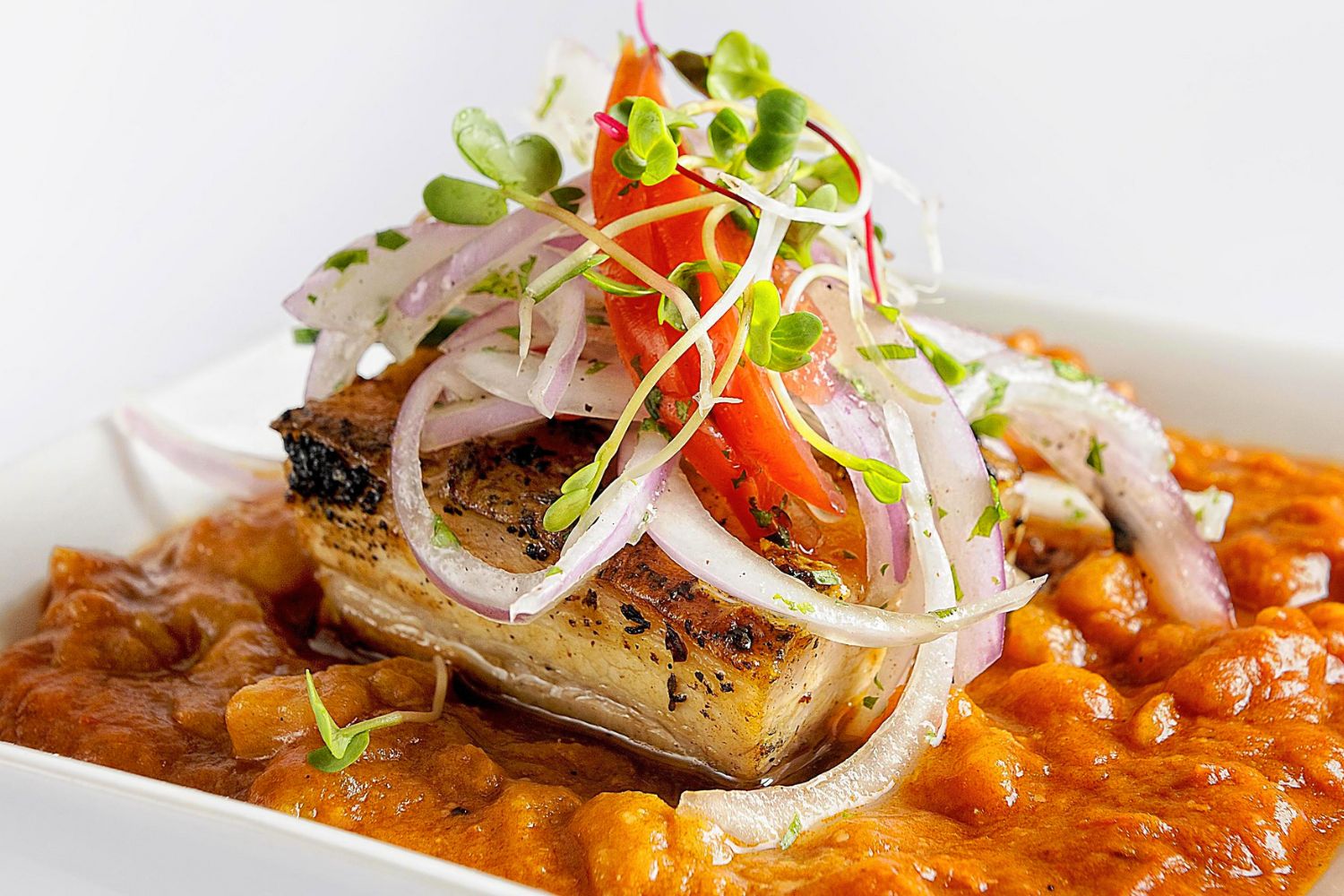
From the Peruvian jungle comes the charm of the delicious juanes, which become the absolute protagonists during the celebration of San Juan every June 23. Juanes represent the perfect combination of ingredients that symbolize the beautiful jungle region.
Juane is a typical dish found throughout the Amazon, but each region adds its distinctive touch. In Iquitos, for example, olives are included in the juane preparation, while in Moyobamba they are not. However, a chicken or chicken prey is always used and wrapped in bijao leaves, which give this dish its characteristic flavor. It is said that this wrapped package. Known as juane, it represents the decapitated head of the patron saint of the jungle, Saint John the Baptist, from whom it takes its name.
The juane is made from rice, pieces of chicken or chicken; all wrapped in bijao leaf and later boiled. Instead of rice, cassava, chonta, a mixture of rice and cassava, beans, among other products, are also used. Before being wrapped in the leaves, the preparation is bathed with a mixture of beaten eggs to be able to get the food to bind and not to come off.
The dish is accompanied according to the customs of each region of the jungle, since some residents usually accompany it with tacacho, cassava or simply with boiled plantain. The juane is accompanied with a glass of chicha de higo or chicha de jora.
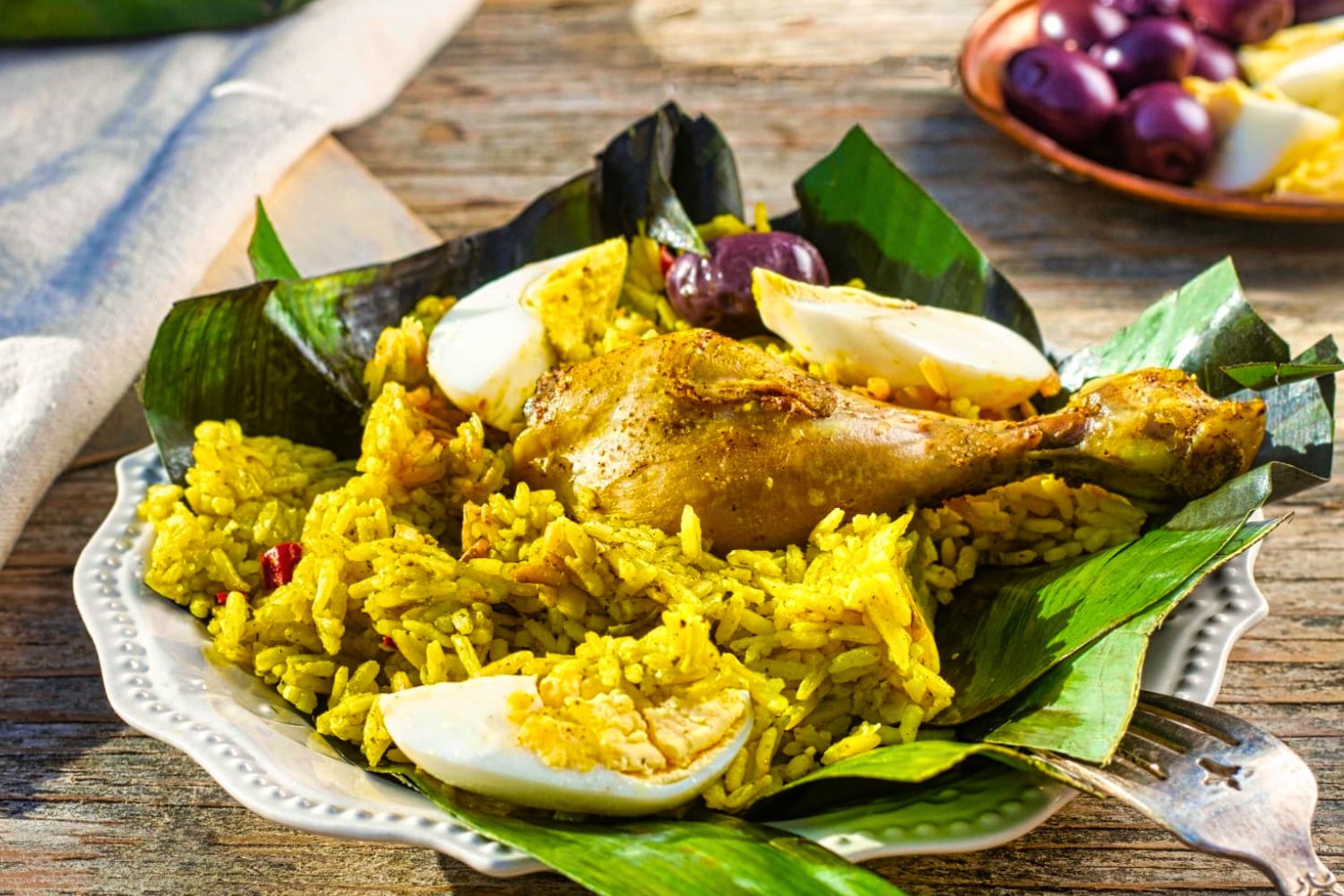
The chactado guinea pig is a delicious delicacy originating in Andean cuisine and an outstanding dish whose main ingredient is the guinea pig. The name “chactado” refers to the way it is roasted or fried, placing a stone on top to make the meat crisp. In fact, the guinea pig is an animal rich in protein and, due to its high nutritional value and unique flavor, the chactado guinea pig is currently in high demand. It is not only popular in the Andean region of Peru, but in other regions as well. Due to this popularity, the preparation of the dish varies from region to region.
It is known that the guinea pig was eaten long before the arrival of the Spanish in Peru. This unique rodent was one of the main foods in the Inca diet. Centuries later, it is still a succulent dish that delights the taste buds.
It is a guinea pig fried in abundant oil, until it reaches a crispy point, under a stone that serves as a lid. It is usually accompanied with boiled potatoes, corn and chili sauces, such as huacatay cream. It is a strongly seasoned dish and one of its distinctive characteristics is that the animal is presented whole on the plate. It is a highly appreciated dish in the Andean areas of Peru.

Chaufa rice is one of those dishes that synthesize that spirit of cultural appropriation and fusion that identifies our gastronomy; specifically the Cantonese cuisine that arrived with Chinese immigration in the 19th century. This fried rice has endless interpretations: pork, chicken, fish, vegetables.
The preparation came into the hands of the Chinese immigrants in Peru, the coolies, Chinese workers in a state of semi-slavery, who were the first to prepare the chaufa rice with the leftovers of the main ingredients in restaurants. The first written reference that has been found is a recipe published in Oriental magazine in 1935.
Undoubtedly, chaufa rice is one of the most popular dishes in Peru, consumed not only in restaurants and homes throughout the country. In addition, it is adapted to different regional raw materials, resulting in different versions. It consists of fried rice mixed with vegetables, including Chinese onion, egg, chicken, soy sauce over high heat. This chicken version is the simplest and most everyday of the chaufa.
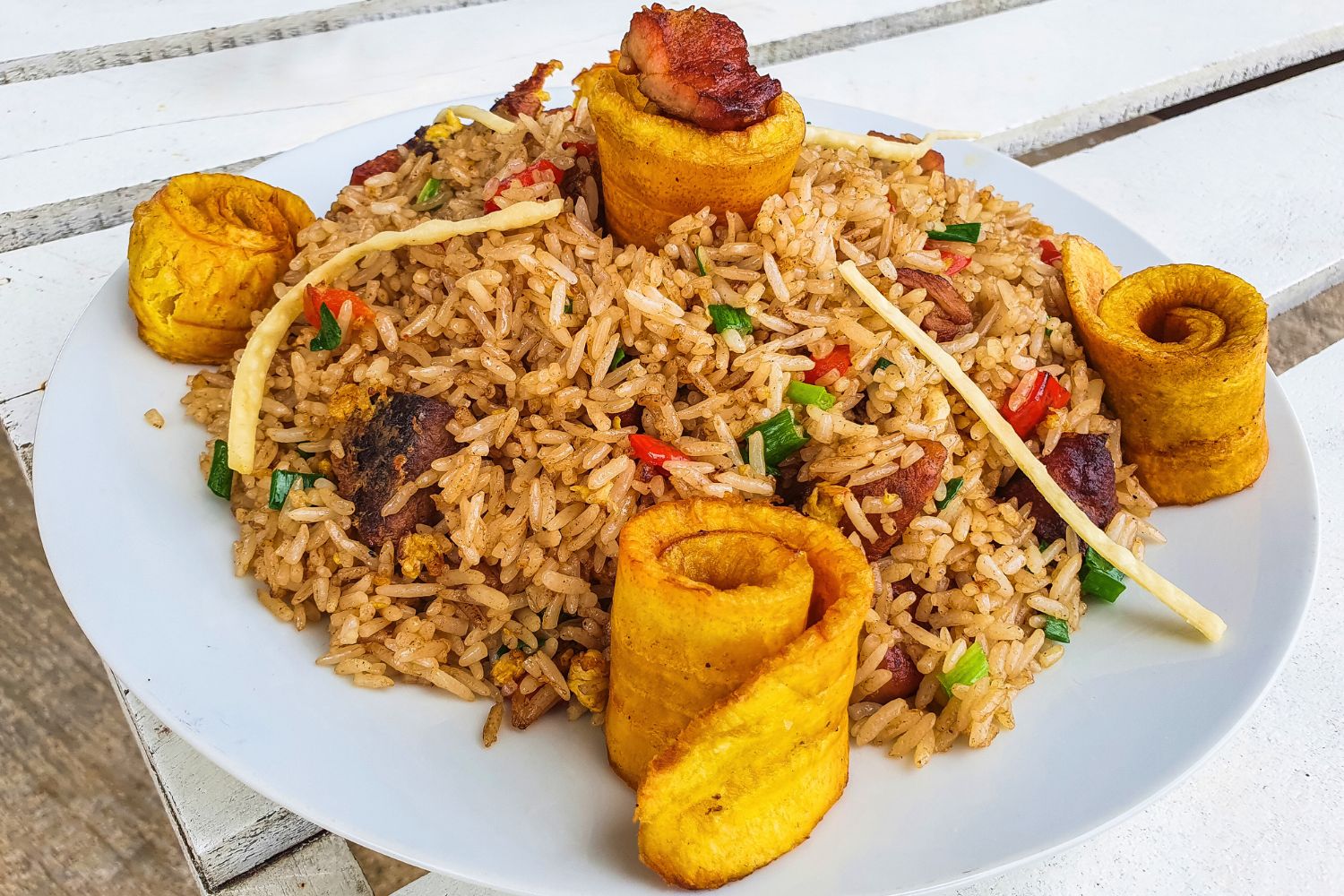
One of the culinary capitals of Peru is the city of Arequipa, known for its famous Arequipa marinade. It is a pork dish marinated with vegetables and spices, all cooked together in a pot. The result is a delicious delicacy that has an incomparable flavor. It is usually served with bread at family Sunday breakfasts. The marinade is very juicy and is accompanied with aniseed tea to facilitate digestion.
Arequipeño adobo, also called adobo de chancho, chancho en adobo or simply adobo, is a typical dish of Peruvian cuisine, native to the Arequipa area, although it is also traditional in other regions of southern Peru. According to the historian Enrique Ramírez Angulo, the Arequipa adobo was invented in the district of Cayma in approximately 1525, fifteen years before the Spanish founding of the city of Arequipa.
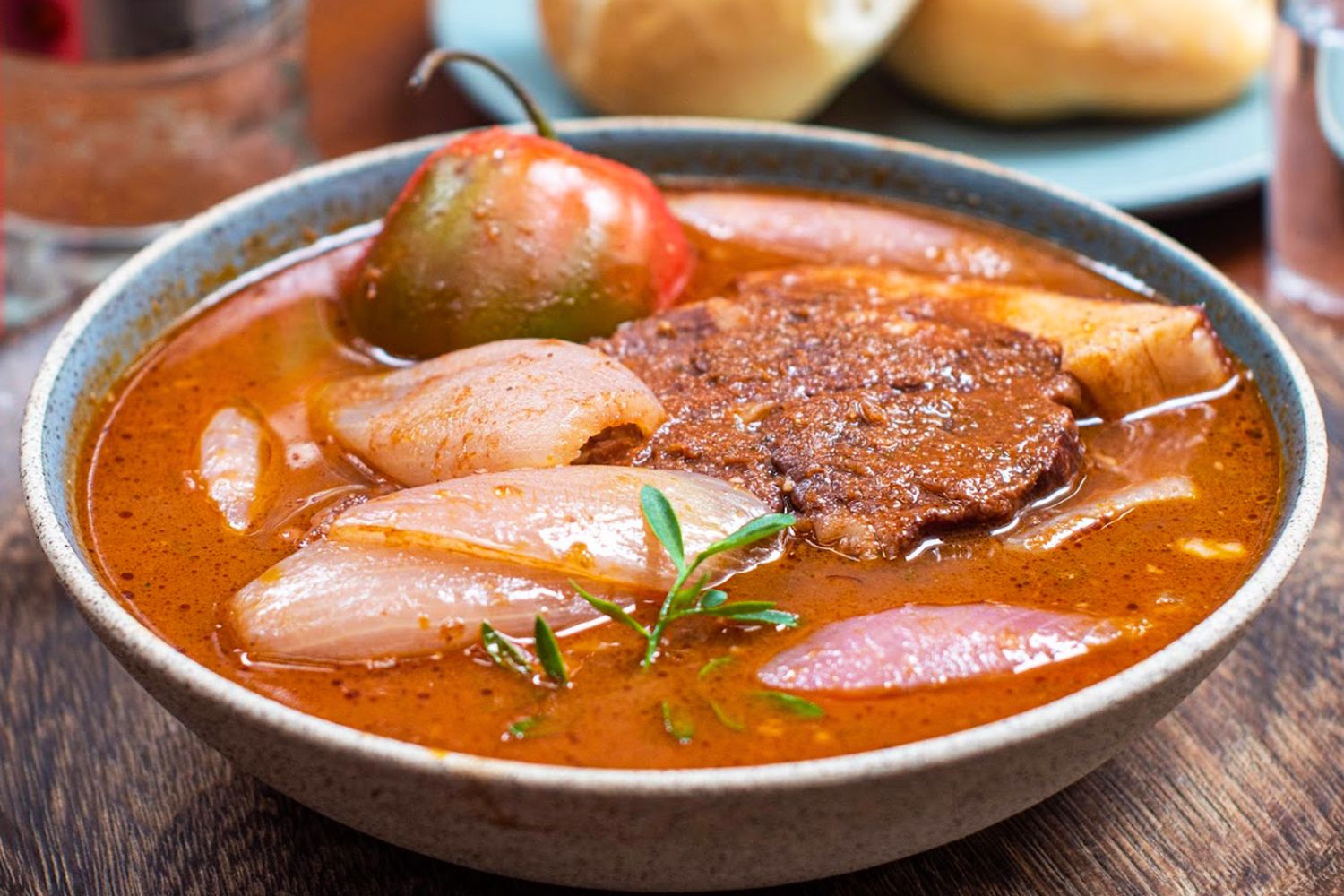

Colca Canyon 3 Day Tour from Arequipa to Puno in a memorable trip, in Peru's fantastic andean nature with a stay in a fancy lodge with an english speaking guide which ensures a personalized experience. Travel by private transport to Yanque, spending the night at Colca Lodge. Continue the next day to admire the amazing condor at the Mirador Cruz del Condor.

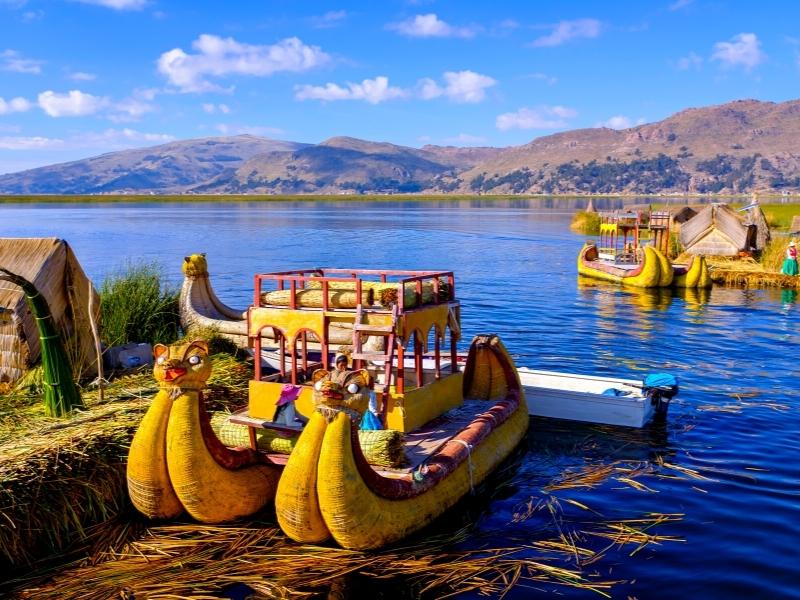
The wonders of Peru await you as you hike through the Manu Amazon rainforest, traverse the plains of the Sacred Valley of the Incas, and stroll the cobbled streets of Cusco on this 15-day trip from Lima. Search for monkeys and medicinal plants in the Amazon, travel the ancient road to Machu Picchu, experience a stay in a traditional community on the shores of serene Lake Titicaca.


The top sights of Peru will leave all the family thrilled by the scenic grandeur, ruined temples, colonial cities, amazing inca trail to Machu Picchu, the Inca Lost City, once buried under the tropical forest which surrounds it.
